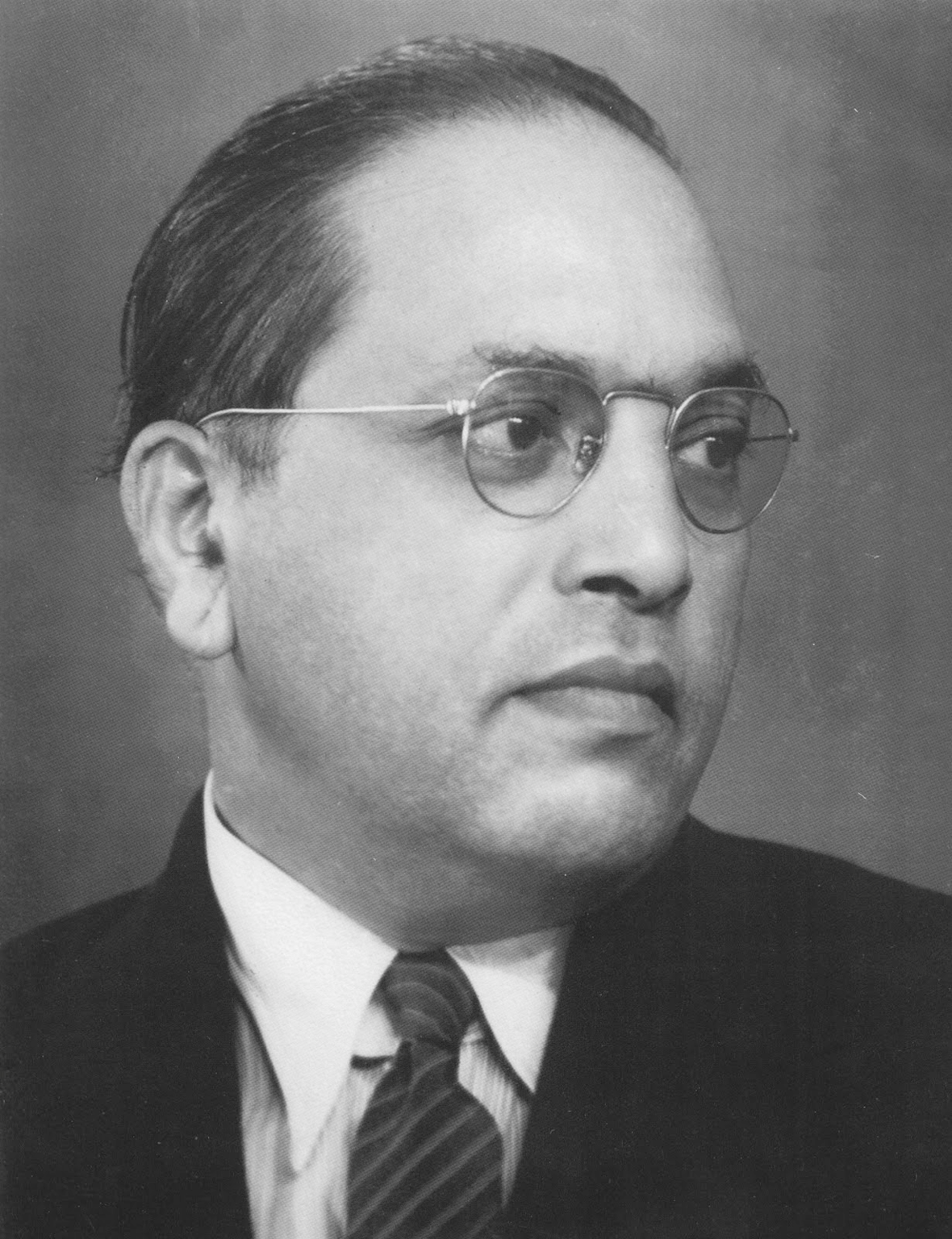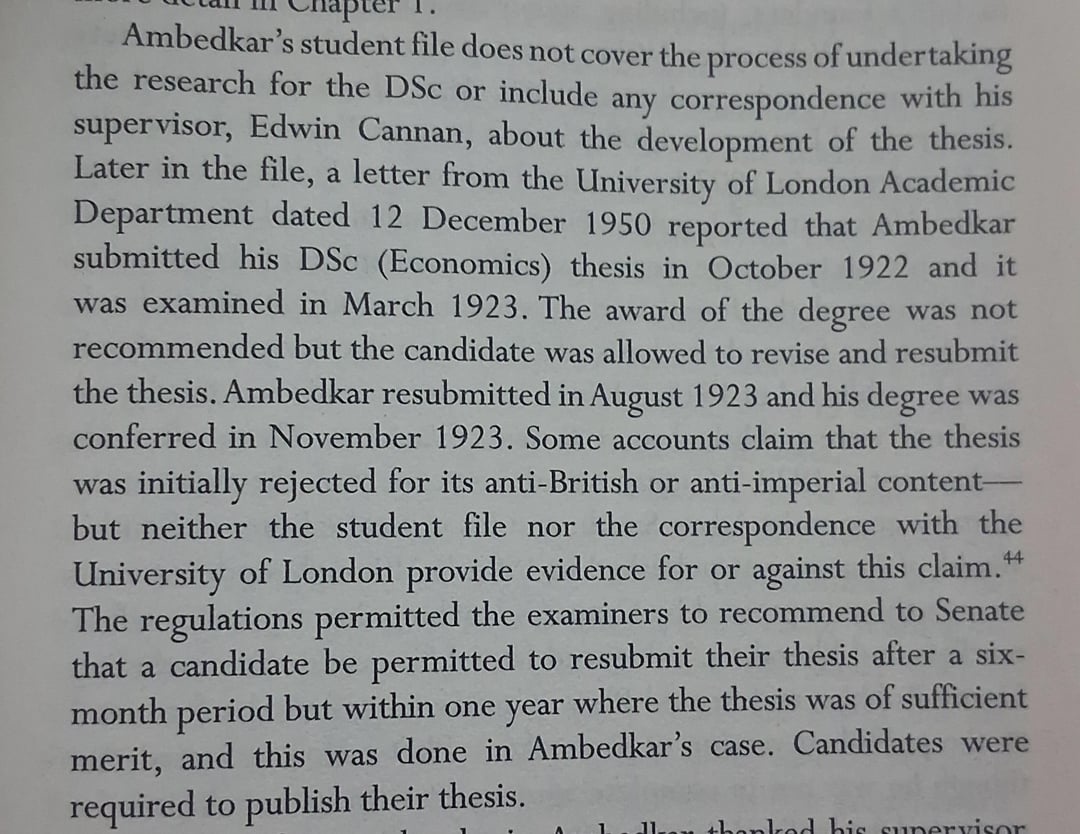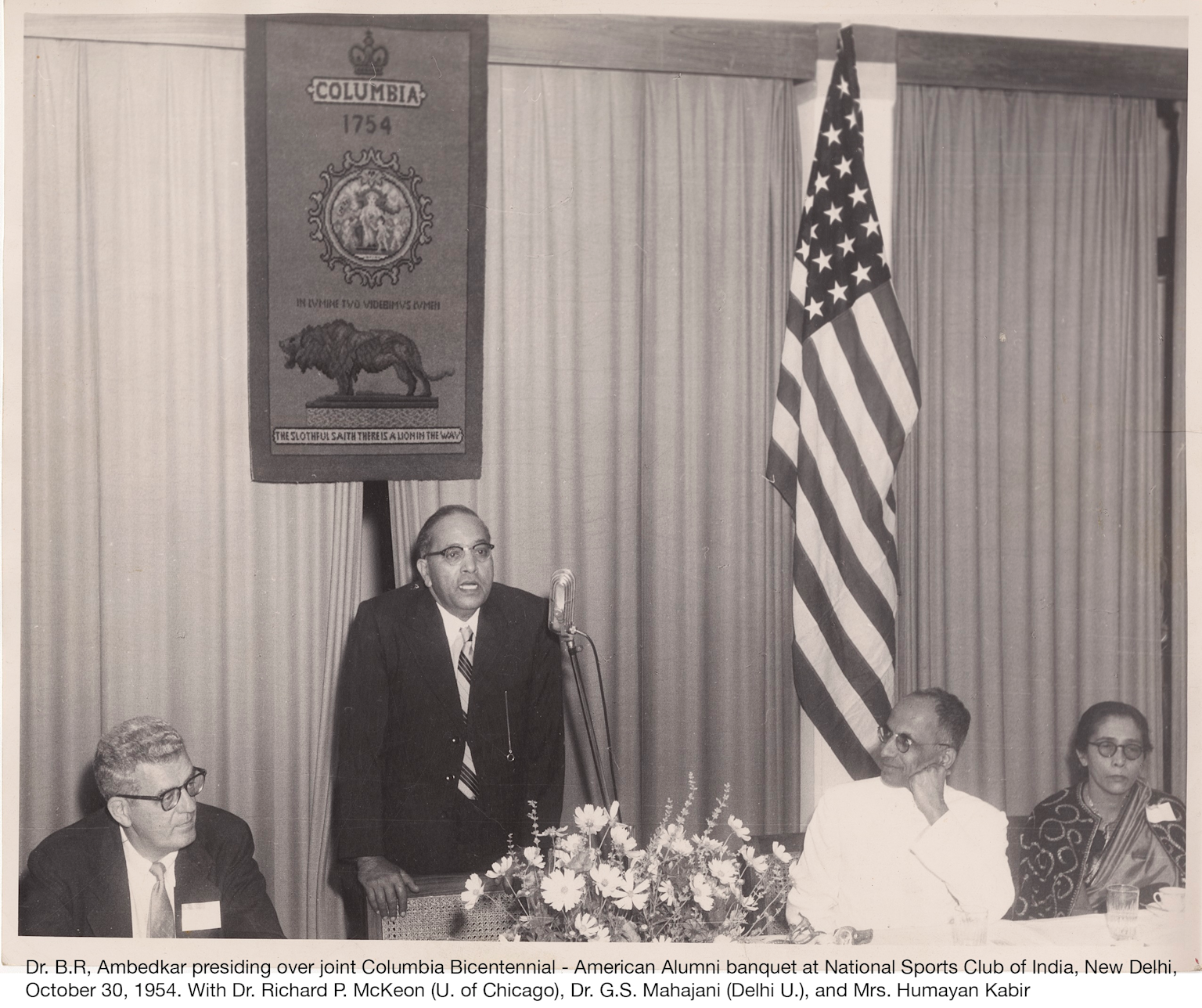Dr. Ambedkar: The Economist of the Oppressed – His Doctoral Work and Economic Vision for India
Dr. Bhimrao Ramji Ambedkar remains one of India’s most remarkable intellectual figures, recognized globally as the architect of the Indian Constitution and a champion of social justice. However, his profound contributions as an economist—particularly his groundbreaking doctoral work and comprehensive economic vision for India—have remained largely underappreciated in mainstream academic discourse. This scholarly oversight represents a significant gap in understanding both India’s economic development trajectory and the intellectual foundations of policies aimed at uplifting the oppressed classes. Ambedkar’s economic philosophy, rooted in the principle of “Bahujan Hitaya, Bahujan Sukhaya” (greatest good for the largest number), provided a unique framework that integrated economic analysis with social justice, making him truly the economist of the oppressed. anushram+1

Portrait of Dr. B. R. Ambedkar, an Indian economist and scholar, highlighting his academic persona wikipedia
The Making of an Economic Scholar: Academic Journey and Intellectual Formation
Early Academic Pursuits at Columbia University
Ambedkar’s transformation into a formidable economist began during his tenure at Columbia University from 1913 to 1916, where he pursued his Master’s and initial doctoral studies under the mentorship of renowned economist Edwin R.A. Seligman. His academic journey at Columbia was marked by exceptional scholarship and original thinking that would later influence India’s economic policies for decades. anushram
His first major work, “Ancient Indian Commerce” (1916), served as his M.A. dissertation and revealed his early preoccupation with the economic dimensions of social structures. This thesis provided a detailed analysis of trade routes, monetary systems, and commercial practices in ancient India, but more importantly, it demonstrated his critical understanding of how rigid caste structures had historically hindered economic mobility and innovation. Ambedkar challenged the glorified versions of Indian economic history, arguing that the decline of commerce was directly linked to oppressive social hierarchies that prevented free economic interaction. azimpremjiuniversity+1
Concurrently, Ambedkar worked on another significant academic contribution, “National Dividend of India: A Historical and Analytical Study” (1916-17), which examined national income distribution and advocated for redistributive justice. This early work established his lifelong commitment to addressing economic exploitation through systematic analysis and policy recommendations. anushram
The London School of Economics and Monetary Economics
Following his studies at Columbia, Ambedkar continued his academic pursuits at the London School of Economics, where he completed his most influential economic work. His doctoral dissertation, “The Problem of the Rupee: Its Origin and Its Solution” (1923), represented a watershed moment in Indian economic thought. Completed under the supervision of economist Edwin Cannan, this thesis demonstrated Ambedkar’s mastery of monetary economics and his ability to critique colonial economic policies with rigorous analytical precision. wikipedia+2

Details of Dr. Ambedkar’s doctoral thesis submission and examination timeline at the University of London, including challenges and resubmission process reddit
The thesis presented a comprehensive history of Indian currency since the eighteenth century while providing a devastating critique of British monetary exploitation. Ambedkar’s analysis revealed how the rupee had become the financial pivot of the entire British colonial project through a series of manipulative monetary reforms in the nineteenth century. His work challenged the prevailing orthodoxy by arguing against the gold-exchange standard favored by John Maynard Keynes and advocating for a modified gold standard that would provide greater stability for India’s economy. wikipedia+2
The significance of this work extended far beyond academic circles. Ambedkar’s thesis directly influenced the Hilton Young Commission (1925), which was tasked with evaluating India’s monetary policy. The commission’s recommendations, heavily influenced by Ambedkar’s analysis, led to the establishment of the Reserve Bank of India in 1935, making him an unacknowledged architect of India’s central banking system. navjyot+3
The Hidden Thesis: Provincial Decentralization of Imperial Finance
A lesser known but equally significant contribution was Ambedkar’s thesis on “Provincial Decentralisation of Imperial Finance in British India”, completed as part of his MSc degree from LSE. This work, which remained unpublished for over a century due to various circumstances, provided a detailed critique of colonial fiscal policies and argued for progressive taxation based on income levels rather than the regressive land revenue system imposed by the British. forwardpress+1
The thesis demonstrated Ambedkar’s sophisticated understanding of public finance and his advocacy for diverting expenditure from military purposes to social goods like education, public health, and water supply. This early work established the intellectual foundation for his later advocacy of social democracy and state-led development. forwardpress
Economic Philosophy: The Foundations of Liberation
Critique of Caste as Economic Exploitation
Ambedkar’s most revolutionary contribution to economic thought was his analysis of the caste system as a mechanism of economic exploitation. Unlike conventional economists who treated social structures as external to economic analysis, Ambedkar demonstrated that caste was not merely a division of labor but a “division of laborers” that created artificial scarcities and prevented optimal resource allocation.socialsciencejournals+3
In his seminal work, “Castes in India: Their Mechanism, Genesis, and Development”, Ambedkar argued that the caste system created what he termed “enclosed classes” that prevented social endosmosis—the free exchange and fluid relationships between social groups necessary for economic dynamism. This analysis revealed how the caste system functioned as a mechanism of “graded hierarchy” that not only exploited lower castes economically but also prevented the formation of class consciousness necessary for economic transformation. ecozhdc.wordpress+1
Ambedkar’s economic analysis of caste demonstrated how traditional village economies were structured around the “economic dependence” of Dalits on upper-caste landlords. This dependency, he argued, was the “chief weapon in the armoury of the Hindus” for maintaining social control and economic exploitation. His solution involved not just legal equality but fundamental restructuring of economic relationships through land redistribution, separate settlements for Dalits, and state-led industrialization. ecozhdc.wordpress
The Vision of State Socialism
Ambedkar’s concept of “State Socialism” represented a unique synthesis of democratic governance and economic planning designed specifically to address the needs of India’s oppressed masses. Unlike orthodox Marxism, which he critiqued for its economic determinism and inadequate understanding of Indian social realities, Ambedkar’s state socialism emphasized constitutional methods and democratic participation. iasgoogle+5
His vision, articulated most comprehensively in “States and Minorities” (1947), proposed that the state should “plan the economic life of the people on lines which would lead to the highest point of productivity without closing every avenue to private enterprise and also provide for the equitable distribution of wealth”. This formulation represented a sophisticated understanding of mixed economy principles decades before they became mainstream in Indian economic policy. isca+2
The key features of Ambedkar’s state socialism included: state ownership of key industries and agricultural land; compulsory insurance schemes managed as state monopolies; collective farming with state support for inputs and marketing; and constitutional protection for these economic arrangements to prevent their reversal by future governments.euroasiapub+3
Rejection of Orthodox Marxism and Buddhist Economics
Ambedkar’s intellectual journey included a sustained engagement with Marxist thought, but he ultimately rejected orthodox Marxism as inadequate for addressing Indian conditions. His critique focused on several key areas: Marxism’s economic determinism, which failed to account for the autonomous power of social and religious structures in India; its inadequate grasp of liberal democracy and preference for revolutionary violence; and its inability to understand that in India, social oppression was often more fundamental than economic exploitation.blogs.library.columbia+2
Instead, Ambedkar developed what might be termed “Buddhist economics”—a framework that emphasized the transformation of consciousness alongside material conditions. His conversion to Buddhism in 1956 represented not an abandonment of economic concerns but their integration into a broader philosophy that prioritized human dignity and social harmony alongside material prosperity.cprgindia+2
Institutional Architecture: Building Economic Democracy
Monetary Policy and Financial Institutions
Ambedkar’s contributions to India’s financial architecture extended far beyond his doctoral thesis on the rupee. His work laid the intellectual foundation for several key institutions that continue to shape India’s economy today. The Reserve Bank of India, established in 1935, incorporated many of the principles Ambedkar had advocated in his thesis, including the importance of an independent central bank for monetary stability.wikipedia+4
His approach to monetary policy was remarkably prescient, emphasizing the distributional consequences of exchange rate management. Ambedkar argued that monetary policy should balance the interests of different classes, warning that excessive devaluation would harm wage earners through inflation while benefiting export-oriented business classes. This nuanced understanding of monetary policy’s social implications remains relevant to contemporary debates about inclusive growth.ras
Ambedkar also played a crucial role in establishing the Finance Commission of India, which he helped design to ensure equitable distribution of financial resources between the center and states. His interventions in the Constituent Assembly debates on financial provisions demonstrated his sophisticated understanding of federal finance and his commitment to protecting the interests of less developed regions and marginalized communities.indiatoday+2
Labor Reforms and Social Security
As Labour Member of the Viceroy’s Executive Council from 1942 to 1946, Ambedkar implemented a comprehensive program of labor reforms that established the foundation for India’s modern labor laws. His approach was characterized by a tripartite system that brought together employers, workers, and government in collaborative policy-making.developingeconomics+4
Ambedkar’s labor reforms included: amendments to the Factories Act reducing working hours to 8 hours per day and establishing paid holidays; creation of statutory welfare funds for miners and other workers; establishment of social insurance schemes including the Employee State Insurance (ESI) system; maternity benefits and protection for women workers; and creation of Employment Exchanges to facilitate job placement.papers.ssrn+3
His vision for labor policy extended beyond immediate welfare measures to encompass broader questions of economic democracy. Ambedkar argued that “the state cannot be content with securing merely fair conditions of work for labour but fair conditions of life”. This holistic approach to worker welfare reflected his understanding that economic liberation required comprehensive social transformation.anubooks

Dr. B.R. Ambedkar presiding over a Columbia University alumni banquet in 1954, highlighting his academic ties and leadership blogs.library.columbia
Infrastructure Development and Water Resources
Ambedkar’s role in India’s infrastructure development, particularly in water resources management, demonstrated his understanding of the connection between physical infrastructure and social transformation. As the architect of major projects like the Damodar Valley Project, Hirakud Dam, and Sone River Valley Project, he pioneered the concept of multipurpose river valley development in India.socialresearchfoundation+4
His approach to water resources development was explicitly modeled on the Tennessee Valley Authority in the United States, emphasizing integrated development that combined flood control, irrigation, power generation, and navigation. Ambedkar argued that such projects were essential not only for economic development but also for providing alternative employment to agricultural laborers and reducing pressure on land.roundtableindia+3
The establishment of the Central Water Commission and Central Electricity Authority under his guidance created institutional frameworks for national resource planning that continue to influence India’s development strategy. His emphasis on equitable distribution of water resources and inclusion of local communities in project planning reflected his broader commitment to democratic participation in economic development.dalittimes+1
Economic Vision for Independent India
Agricultural Transformation and Land Reforms
Ambedkar’s vision for Indian agriculture went far beyond conventional land reforms to encompass fundamental restructuring of rural economic relationships. He identified the “idle labour” in agriculture as a critical constraint on productivity and argued that “industrial development” was essential to absorb surplus agricultural workers and increase overall productivity.ecozhdc.wordpress+3
His analysis of agricultural problems emphasized the interaction between land scarcity, capital shortage, and technological backwardness. Unlike reformers who focused solely on land redistribution, Ambedkar argued that “consolidation may mitigate the issues of scattered holdings, but it will not resolve the problems of small holdings unless the consolidated holdings are economically viable”.ijfmr+1
Ambedkar’s solution involved collective farming under state guidance, combined with mechanization and scientific methods. He proposed that agricultural land should be treated as a “state industry” with cultivators working as partners rather than individual proprietors, ensuring both efficiency and equity in agricultural production.iasgoogle+2
Industrial Development and Employment Generation
Ambedkar’s approach to industrialization was driven by his understanding of its potential to break caste-based occupational immobility and create opportunities for the oppressed classes. He argued that “industrialization can lessen the pressure of surplus labor and also increase the amount of capital goods making it a best remedy for all agricultural problems in India”.insightsonindia+2
His industrial policy emphasized state-led development in key sectors while maintaining space for private enterprise in less critical areas. Ambedkar was particularly concerned with developing small-scale industries that could generate employment for unskilled workers and contribute to decentralized development.iasgoogle+2
The integration of infrastructure development with industrial policy was a distinctive feature of Ambedkar’s approach. His water resources projects were designed not only to provide irrigation but also to generate hydroelectric power for industrial development, creating a virtuous cycle of rural-urban development.roundtableindia+1
Social Security and Economic Democracy
Ambedkar’s vision of economic democracy extended beyond formal political rights to encompass comprehensive social security and economic participation for all citizens. His concept of “economic democracy” recognized that political freedom without economic security was meaningless for the oppressed classes.isca+3
His proposals for social security included universal insurance schemes managed by the state, old-age pensions, health insurance, and unemployment benefits. Ambedkar argued that such schemes would not only provide security to individuals but also generate resources for state investment in development projects.iasgoogle+2
The emphasis on constitutional protection for economic rights reflected his understanding that economic gains could be easily reversed without legal safeguards. His contribution to the Directive Principles of State Policy in the Indian Constitution ensured that social and economic justice would remain guiding principles for future governments.scribd+1
Contemporary Relevance and Enduring Legacy
Monetary Policy and Financial Inclusion
Ambedkar’s insights on monetary policy remain remarkably relevant to contemporary India’s economic challenges. His emphasis on the distributional consequences of monetary policy anticipated current debates about inflation targeting and its impact on different income groups. His warning that “nothing will stabilize the rupee unless we stabilize its general purchasing power” continues to influence India’s approach to monetary management.navjyot+2
The financial inclusion agenda that has become central to Indian policy-making reflects Ambedkar’s early recognition that access to credit and financial services was essential for economic empowerment of marginalized communities. His advocacy for cooperative banks and state-managed insurance schemes provided templates for institutions like NABARD and Regional Rural Banks that continue to serve rural populations. insightsonindia
Infrastructure Development and Regional Balance
Ambedkar’s multipurpose river valley projects established a model for integrated development that continues to influence India’s infrastructure policy. His emphasis on regional balance and equitable distribution of infrastructure benefits anticipated contemporary concerns about reducing interstate and intraregional disparities.roundtableindia+2
The creation of institutions like the Central Water Commission under his guidance provided frameworks for inter-state cooperation in resource management that remain crucial for India’s federal development strategy. His vision of water as a “shared resource” available to all segments of society continues to inform debates about water governance and social equity.dalittimes+1
Labor Relations and Social Security
The tripartite approach to labor relations that Ambedkar pioneered continues to shape India’s industrial policy. His emphasis on worker participation in economic planning and his integration of social security with employment policy provided foundations for contemporary programs like the Mahatma Gandhi National Rural Employment Guarantee Act.papers.ssrn+1
Ambedkar’s recognition that “economic empowerment” was linked to “social dignity” remains central to discussions about inclusive growth and development. His argument that “social democracy is incomplete without economic justice” continues to influence policy frameworks aimed at addressing inequality and social exclusion.ijfmr
Conclusion: The Unfinished Agenda
Dr. B.R. Ambedkar’s contributions as an economist of the oppressed represent one of the most comprehensive and intellectually rigorous approaches to development economics ever articulated in the Indian context. His doctoral work provided the analytical foundation for India’s monetary and financial institutions, while his broader economic vision offered a roadmap for inclusive development that remains relevant to contemporary challenges.
The integration of rigorous economic analysis with social justice concerns that characterized Ambedkar’s approach offers valuable insights for addressing persistent problems of poverty, inequality, and social exclusion. His understanding that “a weak economy will always crush the weak” reminds us that economic policy cannot be divorced from concerns about power, dignity, and social transformation.pib
Perhaps most importantly, Ambedkar’s vision of “state socialism” provides an alternative to both unbridled capitalism and authoritarian socialism—a democratic framework for economic planning that prioritizes the needs of the oppressed while maintaining space for innovation and enterprise. As India continues to grapple with questions of inclusive growth and sustainable development, Ambedkar’s economic thought provides both intellectual tools and moral vision for building a more just and equitable society.iasgoogle+2
The continuing relevance of Ambedkar’s economic ideas suggests that his vision of India as a society that provides “liberty, equality, and fraternity” to all its citizens remains an unfinished agenda. His work as an economist of the oppressed reminds us that true development must address not only material needs but also the deeper structures of power and privilege that perpetuate inequality and exclusion. In this sense, Ambedkar’s economic thought provides not just historical insight but a continuing challenge to create economic systems that serve human dignity and social justice.
- https://www.anushram.com/blog/thesis-of-dr-br-ambedkar/
- https://www.socialsciencejournals.net/archives/2025/vol7issue1/PartH/7-1-101-294.pdf
- https://azimpremjiuniversity.edu.in/indian-economists/b-r-ambedkar
- https://en.wikipedia.org/wiki/B._R._Ambedkar
- http://www.ijmdrr.com/admin/downloads/2201202511.pdf
- https://navjyot.net/wp-content/uploads/2025/01/56.pdf
- https://testbook.com/question-answer/the-doctoral-thesis-of-dr-ambedkar-is-entitled-as–638417c635ce3f15c71a0efd
- https://www.insightsonindia.com/2025/04/17/ambedkars-contributions-to-indian-economy/
- https://www.ijfmr.com/papers/2024/4/24174.pdf
- https://www.indiatoday.in/india-today-insight/story/why-publication-of-br-ambedkars-thesis-a-century-later-will-be-significant-2334230-2023-02-13
- https://www.forwardpress.in/2014/12/babasahebs-economic-vision/
- https://ecozhdc.wordpress.com/2020/06/13/ambedkar-the-economist-we-never-knew/
- https://developingeconomics.org/2025/07/08/more-than-100-years-of-ambedkars-the-problem-of-the-rupee-insights-ideas-and-intellectual-rigour-still-awaiting-discovery/
- https://organiser.org/2024/12/15/269185/bharat/the-rupee-saga-relevance-of-ambedkars-economic-thought-after-100-years/
- https://www.mea.gov.in/Images/CPV/Volume12.pdf
- https://iasgoogle.com/n/dr-b-r-ambedkar-rsquo-s-idea-of-state-socialism-upsc-cse-mains-2016-political-science-and-international-relations-paper-1
- https://euroasiapub.org/wp-content/uploads/134Nov17DhaniIJMR.pdf
- https://www.scribd.com/document/90552793/Ancient-Indian-Commerce-Dr-B-R-ambedkar
- https://www.isca.in/IJSS/Archive/v2/i8/6.ISCA-IRJSS-2013-113.pdf
- https://blogs.library.columbia.edu/global-studies/2019/04/15/speaking-truth-to-power-dr-ambedkar-and-columbia-university/
- https://www.cprgindia.org/wp-content/uploads/2024/01/Economic-Thought-of-Ambedkar-and-Gandhi.pdf
- https://www.allaboutambedkaronline.com/post/a-critical-overview-of-the-problem-of-the-rupee
- https://blogs.lse.ac.uk/southasia/2025/01/27/b-r-ambedkar-and-a-legacy-of-labour-empowerment/
- https://anubooks.com/uploads/session_pdf/16625312643.pdf
- https://www.ijnrd.org/papers/IJNRD2207075.pdf
- https://ras.org.in/index.php?Article=b_r_ambedkar_on_caste_and_land_relations_in_india
- https://english.mahamoney.com/dr-b-r-ambedkars-economic-vision-driving-indias-growth-and-social-equity
- https://www.aarhat.com/download-article/4112/
- https://papers.ssrn.com/sol3/Delivery.cfm/4818359.pdf?abstractid=4818359
- https://www.linkedin.com/pulse/dr-ambedkars-scientific-views-socio-economic-india-petkar-phd
- https://www.drbrambedkarcollege.ac.in/uploads/publications/Academia-The%20Rising%20India%20&%20Economic%20Thinking%20of%20Dr%20Ambedkar.pdf
- https://www.j-humansciences.com/ojs/index.php/IJHS/article/download/2055/914/6680
- http://www.socialresearchfoundation.com/upoadreserchpapers/2/240/1908121032161st%20sanjay%20prasad.pdf
- https://www.roundtableindia.co.in/dr-b-r-ambedkar-from-opprobrium-of-the-vedas-to-the-negation-of-karl-marx-and-surrender-to-the-nastika-buddhism/
- https://navjyot.net/wp-content/uploads/2025/01/59.pdf
- https://dalittimes.in/dr-b-r-ambedkar-and-the-reserve-bank-of-india-the-forgotten-intellectual-architect/
- http://ijmsrr.com/downloads/040320216.pdf
- https://www.forwardpress.in/2020/04/dr-ambedkar-pioneer-of-national-water-resources-development-policy/
- https://www.ijfmr.com/papers/2023/5/6461.pdf
- https://blog.lukmaanias.com/2025/04/21/dr-b-r-ambedkar-the-architect-of-modern-india-his-ideology-struggle-and-enduring-relevance/
- https://eparlib.nic.in/bitstream/123456789/763010/1/cad_10-08-1949.pdf
- https://cafedissensusblog.com/2020/05/26/book-review-b-r-ambedkars-states-and-minorities/
- https://www.ijfmr.com/papers/2024/3/23160.pdf
- https://static.pib.gov.in/WriteReadData/specificdocs/documents/2023/apr/doc2023413180601.pdf
- https://research-communications.cmpcollege.ac.in/wp-content/uploads/2025/01/20-Vikas-Deep-Verma-and-Dr.-Radheshyam-Prasad-Dr.-B.-R.-Ambedkar-Architect-of-Indian-Labour-Reforms-and-Pioneer-of-Workers-Social-Security.pdf
- https://sansad.in/rs/about/constituent-assembly
- https://pactproject.net/2023/04/13/dr-b-r-ambedkars-position-on-socio-economic-rights-in-the-indian-constitution/
- https://countercurrents.org/2024/05/remembering-dr-ambedkars-interventions-for-labour-rights-on-may-day/
- https://www.constitutionofindia.net/debates/09-aug-1949/
- https://www.ijcrt.org/papers/IJCRT1135448.pdf
- https://labour.gov.in/sites/default/files/Chapter%20-%201.pdf
- https://sarwahara.com/2020/12/19/book-review-states-minorities-a-critique-of-ambedkars-economic-ideas/
- https://navjyot.net/wp-content/uploads/2025/03/119.pdf
- https://ijari.org/assets/papers/10/2/10.51976ijari.1022202.pdf
- https://indianexpress.com/article/research/how-ambedkar-reformed-labour-laws-in-india-9580319/


















[…] “The Economist of the Oppressed” […]